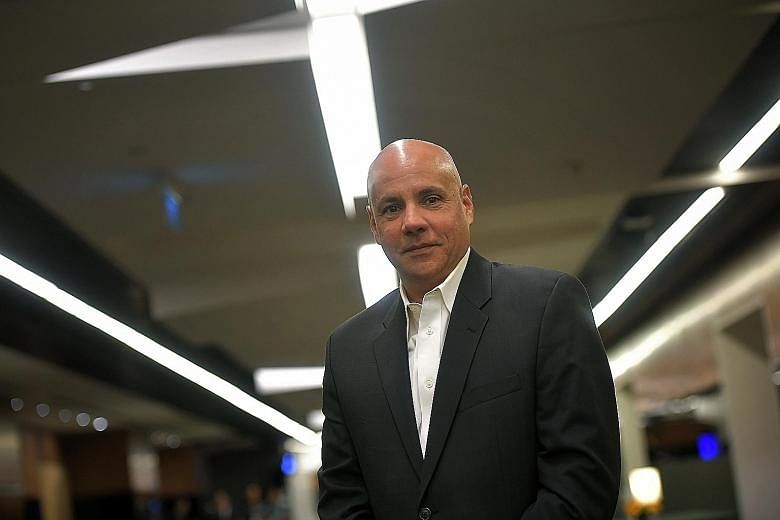It is not exactly like the 2002 futuristic science-fiction film Minority Report, in which police officers arrest potential criminals before they commit crimes.
Yet, some crime-fighting innovations like PredPol appear to give police the upper hand in deterring crime, said Commander Jorge R. Rodriguez from the Los Angeles Police Department (LAPD).
Comdr Rodriguez was a guest speaker yesterday at the Interpol World 2017 Congress.
He shared the LAPD's experience by presenting a case study highlighting the use of PredPol, a predictive policing software that pinpoints crime hot spots based on historical data like crime type, location and date.
Comdr Rodriguez, who heads eight police stations in Los Angeles, California, had told The Straits Times a day earlier that predictive policing helps narrow the likelihood of a crime occurring in areas depicted by a 500 feet by 500 feet box, which works out to 2.3ha.
He said: "So, what we tell our officers as they're driving from Point A to Point B through the city is know where these boxes are, and drive through them, so you can provide a police presence."
First introduced to the LAPD in 2012, PredPol was used to track property crimes like burglaries, theft from vehicles and motor vehicle thefts.
During his time as captain at three Los Angeles police divisions, property crimes decreased, he said.
But he emphasised that PredPol should be used only to augment police operations.
Comdr Rodriguez, who became a police officer in 1987, said: "No matter what technology you have or how advanced you get, you'll still need the human element and cooperation from the community. Human intel cannot be replaced by anything else."
While there are fears that predictive policing might infringe on civil liberties, the greater concern now facing the LAPD is perhaps the increase in violent crimes.
A Los Angeles Times report last December stated that violent- crime figures had risen for a third straight year in the wake of homicides and gang-related shootings which resulted in 290 people being killed in the city, though the number is lower when compared with the 480 killed a decade ago.
Unfortunately, property-crime figures have gone up too.
Comdr Rodriguez attributed the rise to the decriminalisation of some offences.
He added: "A lot of crime (penalties) have been lowered from felonies to misdemeanours. For property crimes, these individuals know the time they're going to get is minimal when it comes to sentencing.
"Right now, the biggest problem we have is the drug problem."
With the legalisation of marijuana in states like Colorado, Oregon and California, crime figures are expected to rise more, he said.
"You've got to support your (drug) habit (by committing crime)," said Comdr Rodriguez, who thinks that marijuana is a gateway drug.
Over the years, he has met doctors, professional basketball players and well-to-do individuals who had all started their drug abuse with marijuana.
He said: "Next thing you know, they're chasing a high and looking for a bigger euphoric feeling."
They then progress to harder drugs like cocaine and methamphetamines, he said.


